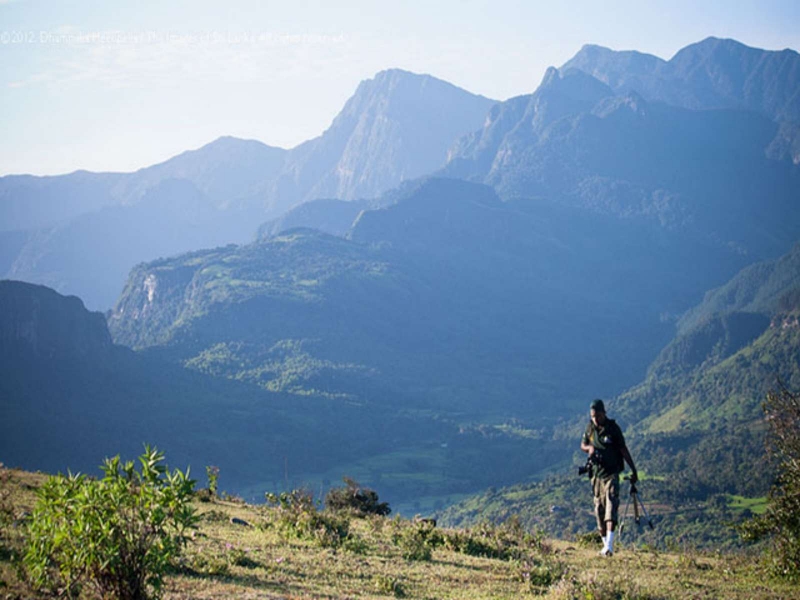The Knuckles Mountain Range, so named because of its striking resemblance to human knuckles, is a stunning UNESCO World Heritage Site attracting many hikers.
Hiking paths go through the thick forest, which is ringed by 34 magical mountains, which are between 900 and 2,000 meters high. There are flowing waterfalls everywhere, charming mountain communities, terraced rice fields, and a bevy of elusive creatures to be found. Located on the island’s southern coast, this 234-square-kilometer park showcases Sri Lanka’s stunning natural diversity.
Getting to the Knuckles Mountain Range
To get to the Knuckles Range, hikers usually use the major highway east of Kandy to Hunnsgiriya or A26. A B-grade road from Hunnasgiriya takes you to Corbett’s Gap, where you’ll get stunning views of the Knuckles mountain range. A vehicle with excellent ground clearance is required to reach the hamlet of Meemure from Corbett’s Gap.
Both Matale and Wattegama may be reached through other entrance roads: Rattota and Riverstone in Matale and Panwila in Wattegama.
Knuckle Hills were given their name by the British because they resembled a clenched fist. The main Knuckles peak (Sri Lanka’s sixth tallest) is located at an elevation of 1863 meters, and it has a unique stand of the dwarf cloud forest.
Hiking & Trekking in the Knuckles Mountain Range
The Dumbara, or ‘Knuckles’ mountains, have it all: cloud-covered mountain summits, flowing waterfalls, symphonies of forest noises, hundreds of rare species of flora and animals, and beautiful vistas.
The magnificent landscape of this conservation area, which reaches heights of almost 1,800 meters, is perfect for walking and trekking thanks to the region’s vast network of forest paths, rivers, and waterfalls. The 155-square-kilometer area is home to five distinct forest types, as well as many rare and unique animals and plants, as well as stunning mountain vistas.
There are about 255 tree species and at least 1,033 different kinds of flowers and plants. Samburs, barking deer, mouse deer, wild boars, giant squirrels, and slender loris inhabit the Knuckles area. Toque and purple-faced leaf monkeys are the only endemic primates found here, with many unique fish, amphibians, and reptiles. There are also 17 of the country’s 23 indigenous bird species flying in the region.
Mini World’s End at Knuckles Range
The Knuckles range’s southernmost cliff, Mini World’s End (1192m), makes for an excellent vantage point for exploring the range. In the distance, you can see the knuckles mountain range and some of the towns nestled in the range’s foothills. Starting at the Knuckles Conservation Centre (KCC) – Deanston, the 1.1km hike takes around an hour to complete at your own pace.
Seasons and Climate
The weather in the Knuckles Mountains can change in an instant. The mountains might be completely obscured by dense fog in a couple of minutes. Any day now, rain may fall.






